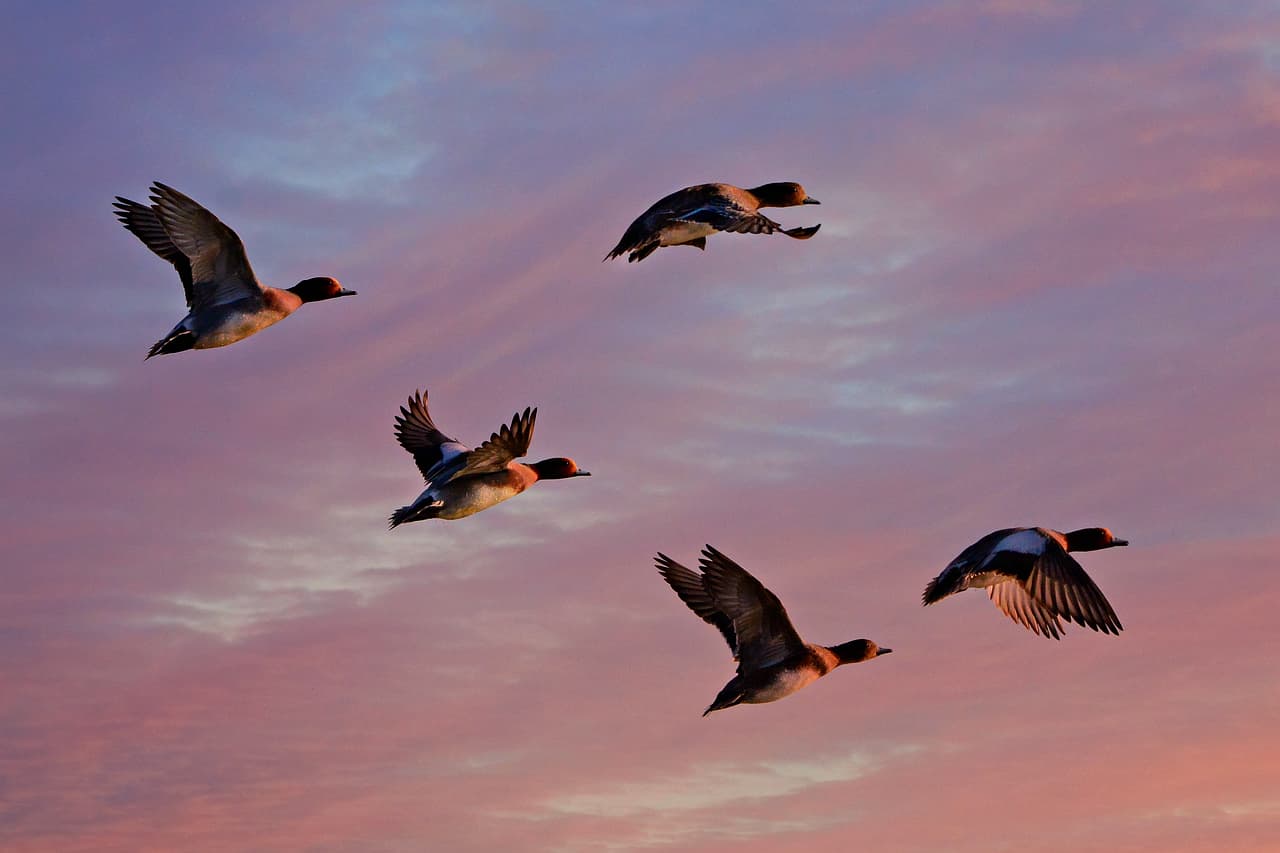5 reasons why Birds fly in 'V' pattern; Read on
Birds flying in a V-formation is more than just a stunning sight—it’s a strategic way to save energy. Scientists have found that this pattern helps birds reduce effort by riding air currents created by the leader. A recent study sheds new light on how precisely birds coordinate their movements for efficiency

The Surprising Reason Birds Fly in a V Shape
Birds migrating in a V-formation is one of nature’s most fascinating spectacles. While it may appear to be just an organized flight pattern, scientists have discovered that this formation serves a crucial aerodynamic purpose. According to a recent study published in Nature, birds use this strategy to conserve energy by working together in a coordinated manner.

The Power of the V-Formation
Rather than flying in a V-shape simply to follow a leader or maintain order, birds do so to make long flights less exhausting. The leading bird faces the most resistance, cutting through the air and generating an uplift that benefits the birds behind it. This technique allows the flock to conserve energy and travel efficiently. A report from Science.org highlights that this formation is not just about proximity but also about precision in timing and positioning. Birds adjust their flight patterns to take advantage of the air currents produced by those in front, demonstrating the intelligence behind their coordinated movement.
How Technology is Enhancing Our Understanding
To gain deeper insights into how birds optimize their energy use in flight, scientists conducted a study on young northern bald ibises as part of a reintroduction project in Europe. The birds were guided by a microlight plane from Austria to Italy, allowing researchers to closely monitor their migration patterns. According to Science.org, each ibis was fitted with a data logger capable of tracking its position to within 30 centimeters. These devices also recorded each wingbeat, providing researchers with detailed information on how the birds synchronized their movements to maximize aerodynamic benefits.
The Importance of Timing and Positioning
One of the key findings from the study was that the ibises did not simply follow the bird in front but carefully adjusted their wingbeats to make the most of the available air currents. By positioning themselves strategically, they could ride the updrafts created by the leading bird, thereby reducing the energy needed to stay in the air. Biomechanist James Usherwood from the Royal Veterinary College in the UK explained that the airflow behind a flapping wing can be highly unpredictable, which makes the birds’ ability to coordinate their movements even more impressive.
Active Coordination Within the Flock
While it might seem like birds in a V-formation are merely trailing behind the leader, their flight is much more complex. Birds in the rear actively adjust their position and wingbeats to minimize drag and turbulence. By synchronizing their movements effectively, they are able to reduce energy loss from downdrafts. Usherwood, who was part of the research, expressed his surprise at the level of precision birds demonstrated, suggesting that large birds flying in a V-formation could be likened to airplanes with moving wings.
Does This Apply to Other Birds?
Although the study focused on ibises, researchers believe that other large migratory birds, such as geese, pelicans, and storks, may use similar energy-saving techniques. Their broad wings allow them to take advantage of the updrafts generated by the birds ahead of them. However, smaller birds might not experience the same benefits, as their rapid wing movements create more chaotic airflow that is difficult to utilize.
Additionally, species like pelicans, cranes, flamingos, and some ducks also adopt this flight strategy. By flying in a V, these birds can conserve energy since those at the back benefit from the air currents produced by the leader, effectively reducing drag and making long-distance flights more efficient.
ALSO READ: Ziro Valley to Munsiyari: Explore 10 less-crowded places for calm rejuvenation trip
Explore the latest Lifestyle News covering fashion, wellness, travel, Food and Recipes, and more. Stay updated with trending Health News, fitness tips, and expert insights to inspire your daily living. Discover personalized lifestyle trends that keep you stylish and informed. Download the Asianet News Official App for everything that adds value to your everyday life.